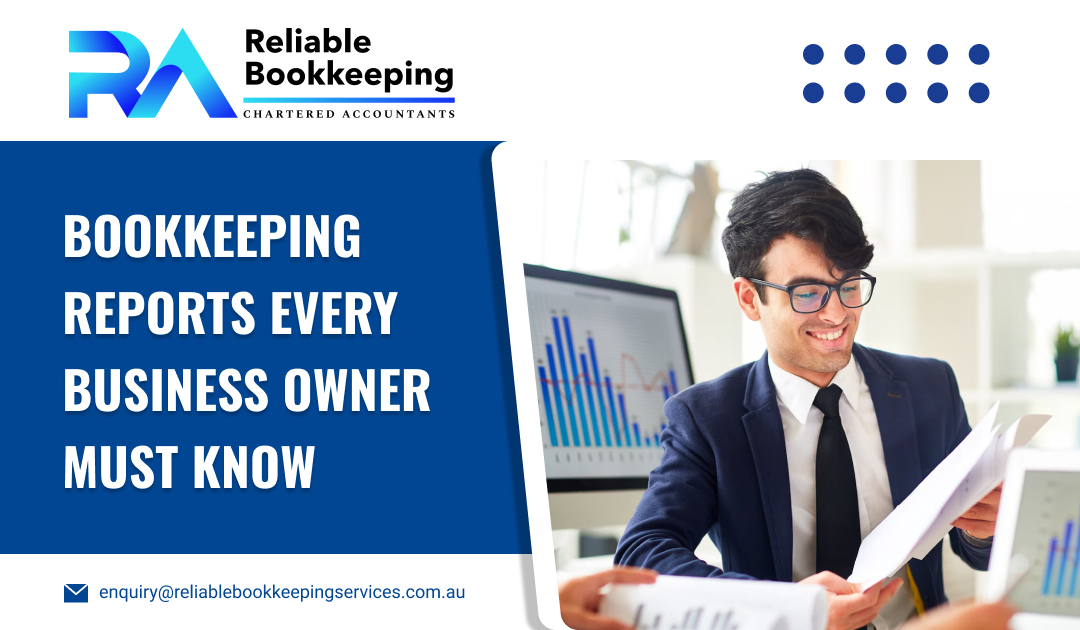If you’re like many small business owners, you might find financial reporting somewhat daunting. Managing your business takes up most of your time, leaving you with little opportunity to dive into detailed financial reports each week. Additionally, your financial literacy might not be strong enough to fully understand what the reports indicate.
What are financial reports in businesses?
Financial reporting is used to monitor, analyse and report your business revenue. It helps you and any investors make wise decisions about managing the company. These financial reports check the resource usage and cash flow to check the financial status of the business. By choosing reliable bookkeeping services, you can be sure that you have an accurate financial report of your business.
Many of you assign bookkeeping to a professional bookkeeper who handles the financial details of our small or medium-sized enterprises. However, even if you have a bookkeeper or accountant managing and reconciling your accounts, it’s crucial for you, as the business owner, to regularly review a few key financial reports to stay informed about your business’s financial health.
What are the types of financial reports?
Understanding your past, current, and future financial situation helps you to make well-informed decisions. Being aware of these numbers helps you evaluate and enhance business performance, reduce risks, and plan realistically for growth. To safeguard your business’s financial well-being, you should familiarise yourself with and consistently review the following financial reports:
Profit and loss statement
Your income statement, also known as the profit and loss statement, provides a summary of your business’s total income and expenses over a month, quarter, or fiscal year. It is organized into three sections:
- total income
- total expenses
- net income/ net profit
Your income statement shows you the real profit you make or lose during a specific time period and can be used to calculate various metrics, including operating profit margin, gross profit margin, and operating ratio. Your profit and loss statement will show a net loss if you’ve had an expensive period or had to manage unexpected bills. However, if you notice that you spend more than you earn, it may show that your business is in financial trouble.
Balance sheet
Your balance sheet shows a picture of your total assets and your total liabilities at a point. Your assets might include investments and cash, your inventory, accounts receivable, equipment and property, while your liabilities will be expenses such as accounts payable, loans, tax, wages, rent, and utilities. Because your balance sheet shows your finances at a specific time period, it offers limited insight into the financial status of your business over time. You can compare it with the previous reporting period, but you must consider it alongside the other financial reports for an accurate view of your business’s financial status.
Cash flow statement
The cash flow statement tracks all cash inflows and outflows, distinguishing itself from the balance sheet and profit and loss statement by focusing solely on cash movements and excluding non-cash activities. By understanding when cash is expected to enter and leave your account, you can proactively address potential cash flow issues and make informed decisions about spending and budgeting. This statement is a vital financial report, as poor cash flow management can lead to business failure. Therefore, selecting reliable small business bookkeeping services is essential to ensure your bookkeeper effectively monitors your cash flow.
Conclusion
Many business owners overlook the importance of tracking all financial activities. Once a business is established, it becomes crucial to maintain financial records. A small mistake can be costly. It can get you in trouble. Thus, every business must have bookkeeping services. You can choose our Reliable Bookkeeping Services in Australia to manage your business finances accurately.

